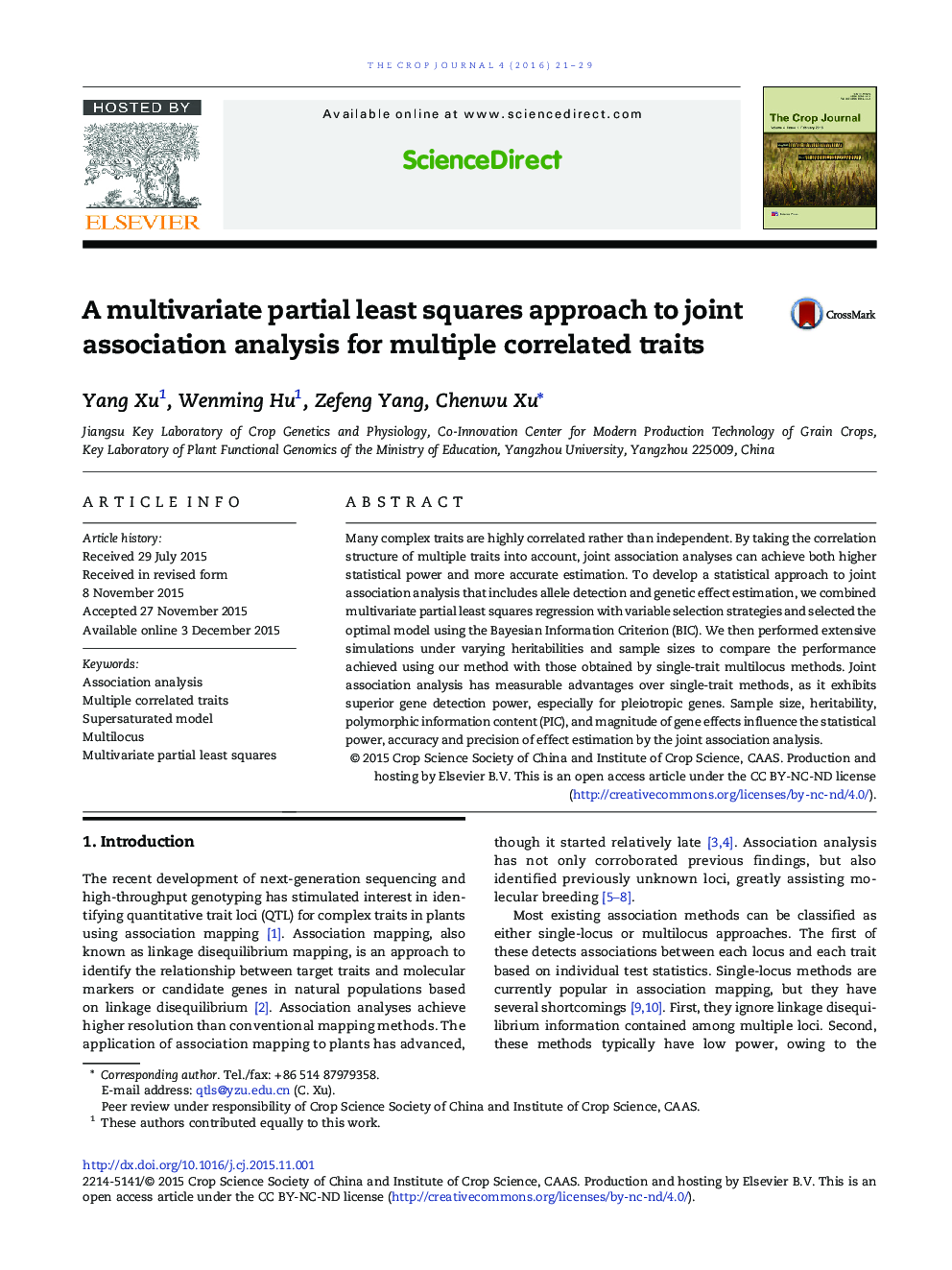| Article ID | Journal | Published Year | Pages | File Type |
|---|---|---|---|---|
| 2079535 | The Crop Journal | 2016 | 9 Pages |
Many complex traits are highly correlated rather than independent. By taking the correlation structure of multiple traits into account, joint association analyses can achieve both higher statistical power and more accurate estimation. To develop a statistical approach to joint association analysis that includes allele detection and genetic effect estimation, we combined multivariate partial least squares regression with variable selection strategies and selected the optimal model using the Bayesian Information Criterion (BIC). We then performed extensive simulations under varying heritabilities and sample sizes to compare the performance achieved using our method with those obtained by single-trait multilocus methods. Joint association analysis has measurable advantages over single-trait methods, as it exhibits superior gene detection power, especially for pleiotropic genes. Sample size, heritability, polymorphic information content (PIC), and magnitude of gene effects influence the statistical power, accuracy and precision of effect estimation by the joint association analysis.
